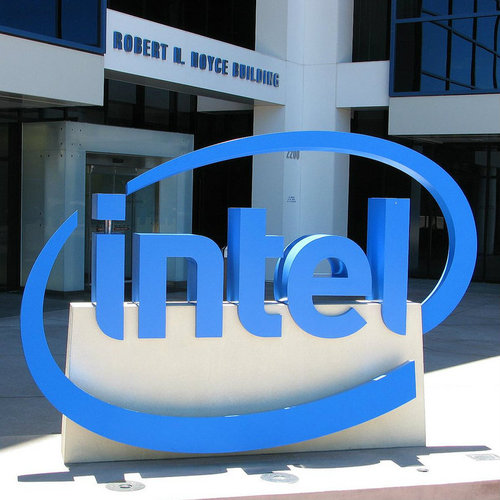Pro Sports a Growth Market for Intel
New Intel Sports Group will be responsible for developing partnerships with major sports leagues to use Intel technologies to create new immersive experiences for fans.

Intel is sinking significantly more investment capital into promising young companies this year than it did last. The chip maker continues to cultivate a widening array of technologies, but this year there was a clear focus on sports and health, emphasized by the establishment of a new business group focused on the pro sports market.
Wendell Brooks, Intel Corp. (Nasdaq: INTC) senior vice president and president of Intel Capital , announced the formation of the new Intel Sports Group, which will be responsible for developing partnerships with major sports leagues to use Intel technologies to create new immersive experiences for fans.
This group is built around Intel's acquisition of Replay Technologies earlier this year. Replay has technology that can recreate 3D visualizations of game activity, enabling viewers to examine gameplay from nearly any angle, whether from the stands or from the playing surface. Brooks will oversee the business unit.
Intel is also keenly interested in sports analytics. Sports analytics have gone way, way, way beyond sabermetrics. Athletic performance is now analyzed as minutely as the stock market. "Every aspect of sports and wellness can now be captured as a piece of data, measured and broadcast nearly in real time -- fueling the continued buildout of the cloud," the company noted.
That all makes sports an important new market for Intel computing products. Intel Capital is supporting that effort not only with investments this year but by formally establishing an ongoing Sports & Health focus, which the company said will use a broad, cross-disciplinary approach spanning multiple investing teams. Brooks and his Sports Group will work with Intel Capital's Sports & Health focus.
Last year, Intel Capital put a total of $22 million into ten companies, including G.fast specialist Sckipio. This year it's distributing $38 million across 12.
Want to know more about communications ICs? Check out our comms chips channel here on Light Reading.
The cluster of companies in the sports and health area that Intel Capital invested in this year include:
CubeWorks, which specializes in millimeter-scale computing -- devices that are literally a millimeter a side that can be used as highly sophisticated sensors. CubeWorks' Cubisens is an autonomous wireless platform able to sense and process its environment, wirelessly transmit the results, or store them for later usage.
Kinduct, which provides cloud-based data and analytics software for sport organizations, military and public safety units, physical medicine clinics, and health and wellness institutions. With a client list that includes teams in all five major sports leagues in North America, the Kinduct platform is changing the way information shapes human performance by allowing organizations to derive insights from multiple sources of data.
K4Connect, which creates solutions that serve individuals living with disabilities by integrating the latest smart technologies and applications into a single responsive system. Its first solution, K4Community, is specifically designed for residents of senior living communities.
The group of companies involved with autonomous machines includes:
Chronocam, which develops computer vision sensors and systems for a variety of applications in autonomous navigation and connected objects. Formed by pioneers in the field of neuromorphic vision, the company wants to improve computer vision by more closely mimicking the vision sensing and processing of the human eye. Neuromorphic engineering has its roots in neural networking.
Embodied, which is developing products that aim to improve robotics by integrating recent advances in machine perception, cognition and learning. Embodied's goal is to develop affordable personal robots. It was co-founded by the former CTO of iRobot (which makes the Roomba).
Perrone Robotics, which provides software and solutions that make it easier to build robust mobile autonomous robotics applications. Its technology helps researchers and engineers develop their partial and fully autonomous vehicle and robotics applications.
Intel also invested in a pair of virtual reality companies:
Dysonics, which creates audio software and hardware products for capture, creation and playback of next-generation content including virtual reality, aiming to yield lifelike 360-degree sound experiences through headphones.
InContext Solutions, whose enterprise SaaS VR platform and services help retailers use VR to visualize new concepts and better understand shopper behavior in retail spaces.
The biggest cluster of Intel Capital investments this year was, naturally, in data and communications:
Eazytec, which specializes in application software and firmware development, system integration and data center services. Intel noted that it has proprietary core firmware (BIOS) technology. The company, based in China, is also a smart city developer and service provider.
Grand Chip Microelectronics (aka Kangxi Communication Technologies), which designs high-linearity and highly integrated WiFi front-end devices for WLAN infrastructure, wireless connectivity on cellular platforms, and the Internet of Things. Grand Chip is also based in China.
Paxata, which has an enterprise-grade, self-service business information platform that serves the needs of both the business consumer and IT. With Paxata, business analysts, data engineers and data scientists are able to instantaneously transform raw data to information ready for business analysis. The platform leverages a patent-pending, machine learning, natural language processing and semantic text algorithm technology built on a distributed, in-memory columnar pipeline architecture for massive scale.
StealthMine enables enterprise applications to run on encrypted data. The technology provides full data insulation against server, network, storage, database attacks and insider compromises.
— Brian Santo, Senior Editor, Components, T&M, Light Reading
Read more about:
AsiaAbout the Author(s)
You May Also Like












